Genotoxic and Oxidative Status of Imatinib Mesylate in Non-Target Human Cells
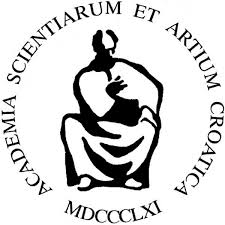
IMI projekti

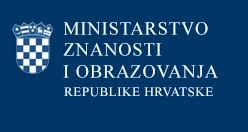
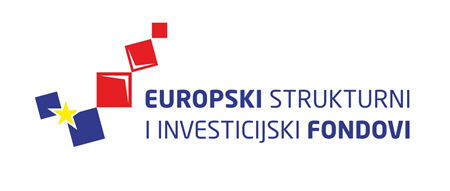

CliniMARK: ‘good biomarker practice’ to increase the number of clinically validated biomarkers
MC Chair: Theo M. Luider
MC Vice Chair: Antonia Vlahou
Thousands of circulating proteins have been shown to be hallmarks of emerging disease, response to treatment, or a patients’ prognosis. The identification of these small molecule biomarkers holds a great promise for significant improvement of personalized medicine based on simple blood tests. For instance, diagnosis and prognosis with biomarkers (e.g. carcinoembryonic antigen (CEA)) has significantly improved patient survival and decreased healthcare costs in colorectal cancer patients. Unfortunately, despite significant investments to increase the number of biomarker studies, only ~150 out of thousands of identified biomarkers have currently been implemented in clinical practice. This is mainly caused by the time-consuming process of reliably detecting biomarkers, the irreproducibility of studies that determine a biomarkers’ clinical value, and by a mismatch in studies that are performed by academia and what is required for regulatory and market approval. To increase the number of clinically validated biomarkers, rather than further increasing the number of biomarker discovery studies, CliniMARK will improve the quality and reproducibility of studies and establish a coherent biomarker development pipeline from discovery to market introduction.
MC Member: Goran Gajski
Links:

Personalized Nutrition in aging society: redox control of major age-related diseases
MC Chair: Mustapha Cherkaoui
MC Vice Chair: Agnieszka Bartoszek
The importance of a healthy ageing process becomes apparent when considering that (a) the Generation 50+ (G50+) already has a share in population of around one third across Europe, with obvious regional variations, (b) this share is likely to increase further in the future, and (c) vitality at older age is not only an important measure of quality of life but also key to participation and productivity. The theme “nutrition and ageing” has many different aspects and poses numerous challenges, which provide a fertile ground for many research themes and networks. Among them, the “NutRedOx” network will focus on the impact of redox active compounds in food on healthy ageing, chemoprevention and redox control in the context of major age-related diseases.
MC Members: Marko Gerić, Vera Garaj-Vrhovac

Project head: Martina Piasek (2017 – 2020), Jasna Jurasović (2021 – 2022)
Participants: Martina Piasek (since 1 Jan 2021), Jasna Jurasović (until 31 Dec 2020), Daria Pašalić, Sandra Stasenko, Tatjana Orct, Karmen Branović Čakanić, Alica Pizent, Maja Lazarus, Irena Brčić Karačonji, Nataša Brajenović, Anja Mikolić, Blanka Tariba Lovaković, Ankica Sekovanić, Antonija Sulimanec Grgec, Tanja Živković Semren (until 29 Feb 2020), Zorana Kljaković-Gašpić, Jelena Kovačić, Andreja Jurič (until 29 Feb 2020), Lana Škrgatić, Iva Miškulin
Project code: HRZZ-IP-2016-06-1998
Duration: 1 Jun 2017 – 31 March 2022
Funding: HRK 1,000,000.00
Prenatal insults, such as maternal nutrient deficiencies, toxic metals’ exposure and cigarette smoking may disrupt fetal growth not only directly, but may also have impact on postnatal health across the life course increasing a risk for various diseases in adulthood. The project will assess health benefits and risks of unavoidable, daily environmental exposure and intake of nutritionally essential and main toxic metals/metalloids in a vulnerable population group of women during child-bearing period that, along with maternal individual (non-genetic and genetic) susceptibility, may alter intrauterine fetal epigenetic regulation and thus may be factors of developmental origins of health and disease (paradigm DOAHD). The exposures via food and tobacco smoking (based on self-reporting and smoking quantified by maternal urine cotinine) and health risks will be assessed in a cross-sectional epidemiological study using methods of human biological monitoring in 150 postpartum women-infant pairs after term vaginal deliveries in a maternity hospital (in addition to previously collected data and similar samples in >200 participants). Biomarkers of exposure/intake will be toxic (Cd, Pb, Hg, As) and essential (Ca, Fe, Zn, Cu, Se) metal/metalloid levels in maternal blood/serum and urine, umbilical cord blood/serum and placental tissue. Biomarkers of effects will be antioxidant enzymes (SOD, GPx), metallothionein (MT), and placental steroid hormones (P4, E2). Associations of maternal metal/metalloid and MT levels with MT2A genetic polymorphisms will be assessed. Potential postnatal health risks due to developmental programming changes will be evaluated by epigenetic markers, DNA methylation and microRNA expression levels. Sensitive and sophisticated methods and equipment for human sample preparations and analyses will be used. Unique contribution in biomedical research will be providing novel data in toxicogenomics–environmental epigenetics of metals, first of that kind in Croatia.

Project Head: Valerije Vrček, Faculty of Pharmacy and Biochemistry, University of Zagreb
Duration: 1 Mar 2017 – 28 Feb 2021
Funding: HRK 937,000.00
Organometallic nucleobase derivatives (OrDeNs) correspond to a new generation of conjugates in which metallocenes are linked to the basic structural elements of heredity. Due to their electrophoric and bioactive properties, OrDeNs are of use in (bio)analytical and medicinal chemistry. The preparation of OrDeNs is based on the copulation reaction between the organometallic part with a heterocyclic base, by using different linkers. The choice of fragments usually follows the target of the ever-growing diversity of structural motifs. In this project all modifications of OrDeNs structures will be directed toward derivatives with marked electrochemical and biological properties. An extensive quantum chemical study will precede the experimental part of the research. By using the density functional theory methods (DFT methods) the chemical properties of OrDeNs, such as stability/reactivity, reduction potential, substituent and solvation effects, can be predicted. These parameters can assist in designing OrDeNs with enhanced bioactivity. A benchmark study in evaluating DFT methods will be performed. DFT methods which are superior in the description of biorganometallic models (for which experimental data are known) will be used to study OrDeNs. New structural elements in OrDeNs include the functional linker, a series of homoannular substituents, selected metallocene-nucleobase pairs, and bis-adducts. A new linker type, which connects the two constitutional parts in OrDeNs, is a carbonyl group and its reduced forms, hydroxyl and methylene groups. The electron communication between metallocene and nucleobase depends, therefore, on the oxidation state and hybridization of the functional linker, and can be tuned by using selected substituents at the cyclopentadienyl ring. The interplay between quantum chemical estimates and electrochemical/biological profiles for model compounds will advance the (re)design of new metallocenes-nucleobase pairs and bis-adducts of OrDeNs.

Duration: 15 Mar 2017 – 14 Mar 2021
Funding: HRK 904,820.00
Nanomedicine, the application of nanotechnology to healthcare, has great impact on innovation of medical treatments and therapies. Nanoparticles (NPs) have an enormous potential in the medical arena as drug and gene delivery vehicles, fluorescent labels and contrast agents. … However, extensive in vivo applications of NPs require a more exhaustive exploration of the physicochemical and physiological processes coupled with introduction of NPs to biological environments. The dynamic physicochemical interactions, kinetics and thermodynamic exchanges between NPs surfaces and the surfaces of biological components give rise to the ‘nano–bio’ interface. It is impossible to inevitably describe all events at this interface, but additional information on the more specific interplay of NPs with bioactive components of living cells and tissues are of the highest relevance for prospective evolution of nanomedicine. … Proposed NanoFaceS project aims to provide a body of new information and new knowledge to the nanomedical endeavor in addressing the scientific uncertainties related to the beyond-state-of-the-art interaction of engineered metal-based NPs, used in theranostics, and sulfur-containing biomolecules (S-biomols), important in living systems due to their complex functional roles. NanoFaceS will use model system comprising (i) a set of silver, gold and iron oxide NPs with varying physico-chemical properties, i.e. size, surface charge and chemical composition and (ii) six representative S-biomols: cysteine, glutathione, metallothionein, albumin and insulin. … The underlying concept of NanoFaceS will be based on understanding of interactions between NPs and S-biomols by implementing multimethodological and multidisciplinary approach which would yield competence on biological consequences of NPs interaction with S-biomols. As a major outcome, project will provide substantial knowledge to the nanomedical landscape.
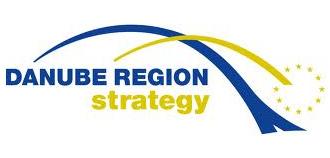
Flagship project of the Priority Area 7 of the EU Strategy for the Danube Region
Project coordinator: Verena Winiwarter
Gertrud Haidvogl (Vice Coordinator)
Researchers from the Institute: Goran Gajski
Link: https://www.danubefuture.eu/
Danube: Future aims at developing interdisciplinary research and education in the Danube River Basin (DRB) simultaneously as a basis for the solution of pressing environmental issues and a sustainable future of the region. Danube: Future is a multi-year program that consists of three modules: core, capacity building, and sustainability related research with a long-term socio-ecological component. Danube: Future is a unique combination of regional, national, and supra-national initiatives in interdisciplinary sustainability research with training and capacity building. It contributes to the sustainable development of the DRB with a particular focus on the contribution of humanities.
The Danube:Future White Paper was prepared in a bottom-up process that involved researchers from the majority of Danube countries from the natural and social sciences as well as from the humanities. It deals with research and capacity building needs, and challenges and opportunities for the development of the sustainability-oriented knowledge society of the Danube River Basin. Recommendations for future research take into account inter- and transdisciplinary approaches and are based on principles of precautionary action, public participation, social learning and responsible research.
The paper can be found at the following link: https://www.danubefuture.eu/publication/book/610
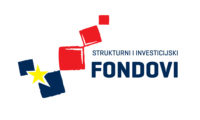
Full title of project: Preparation of Documentation for the Research and Education Centre of Environmental Health and Radiation Protection – Reconstruction and Expansion of the Institute for Medical Research and Occupational Health in Zagreb (RC.2.2.10-0001)
Duration: 29 Jan-29 Nov 2016
Beneficiary: Institute for Medical Research and Occupational Health
Total project funds: 4,268,330.00 HRK
EU funding: 3,628,080.50 HRK (85%)
Following a successful application to Call RC.2.2.10 (translated title: Preparing infrastructural projects for the ERDF 2014-2020), the Institute received a grant in the amount of 4,268,330.00 HRK (85 % funded by the EU; 15 % by the Republic of Croatia). The aim of the project was to collect all of the documentation necessary to apply to the EU for funding the project of building the Research and Education Centre of Environmental Health and Radiation Protection (which implies the reconstruction of the central building of the Institute and its expansion southward), which the Ministry of Science, Education and Sports had pre-selected and added to its list of priority projects for Croatian research infrastructure. The project was implemented in full and with great success, making the Institute a prepared candidate for funding. Once the Ministry and other relevant bodies prepare and open a call for funding the construction of the proposed building, the Institute plans to apply.